Hiruko the Goblin, Yokai Hunter: Hiruko (1991)
Directed by: Shinya Tsukamoto
Written by: Daijiro Morohoshi, Koji Tsutsumi, Shinya Tsukamoto
Starring: Kenji Sawada, Masaki Kudou, Megumi Ueno
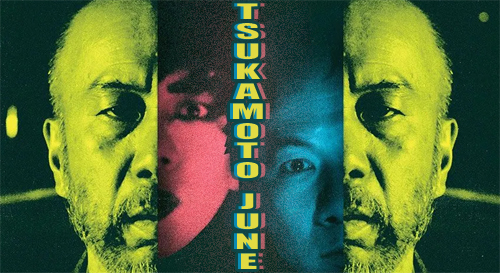
Available now from Third Window on Blu-ray and to Stream
With its clean synthesized music and its sentimental moments, is this really another Shinya Tsukamoto movie? Composer Chu Ishikawa is absent and a company called Makotoya gets top billing over the director’s own Kaiju Theatre label. It’s more pedestrian than anything he had worked on at this early career stage, perhaps as it’s a manga adaptation. Prior to this Tsukamoto had given high-school fantasy a shot with his experimental film The Adventure of Denchu-Kozo. But for whatever reason this often feels more like a ‘for hire’ project rather than something with that same kind of frenzied momentum. The story of a successful artist being lured into a deal with a studio is an old one. Which isn’t to say that there aren’t enjoyable moments in what is essentially a tale of a mad scientist and a teenager fighting evil. But does it have any sort of creative edge?
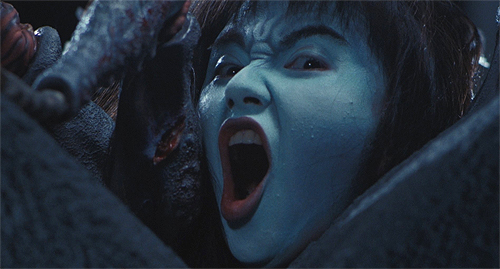
After discovering the gateway to a Lovecraftian hell beneath a school Professor Yabe (Naoto Takenaka) and student Tsukishima (Megumi Ueno) come face to face with a sinister power which has been sleeping within. Although he describes this as a ‘Tomb of the Ancients’ it seems more like the portal to a realm of monsters. One that should have remained closed. He sends his colleague and brother in-law Hieda (Kenji Sawada) a letter about the discovery all too late, setting in motion the events of the story. What he can do to help is unclear as he seems like an awkward social outcast who gets frightened by cockroaches. He’s also depressed about the absence of his late wife Akane (Chika Asamoto). However, like all good underdog protagonists he answers the call. Coincidentally the reason he’s ostracised by the Yabe family has to do with his research into monsters, so he comes prepared with a variety of gadgets.
Meanwhile Yabe’s son Masao (Masaki Kudou) is smitten with Tsukishima and tries to meet her during the summer holidays. But he only finds his Uncle Hieda and a lot of odd occurrences at the school. There’s a slow paced jazzy vibe to the first act which is a far cry from the rust filled visions of Tetsuo: The Iron Man. But there are soon plenty of 1980s style horror movie deaths and creature effects as things progress. Masao thinks that the caretaker Watanabe (Hideo Murota) must have something to do with all of this, though this seems unlikely when everything starts to become a blood-soaked nightmare. It also seems clear that Masao himself has a connection to the unearthly goings-on when his skin reacts violently any time someone is put in danger. Which of course doesn’t stop him from suspecting Watanabe or believing that Tsukishima is going to be just fine. Soon the unlikely student and teacher duo are on a quest to find a series of stone tablets and a mysterious crown.
There are a lot of influences on show as the adventure unfolds. Hieda’s suitcase contains a bunch of home-made contraptions that look like something from Ghostbusters, though one of them behaves like the motion tracker from Aliens. There are various archaeology scenes, depictions of souls trapped in hell, a chainsaw sequence, and a lot of heads that sprout spider legs. An action scene in a kitchen even pre-dates Jurassic Park by a year or two. It’s part haunted house affair and part teen thriller, with plenty of soap-opera melodrama just for good measure. But with so much stuff going on it’s also strangely lethargic in terms of a compelling narrative. The mismatched pair spend a lot of time running around in circles rather than actually using clues they’ve uncovered. They’re against the clock, apparently, but sometimes they stop to chat about their romantic problems. The biggest issue is the way it just doesn’t have enough of an identity of its own.
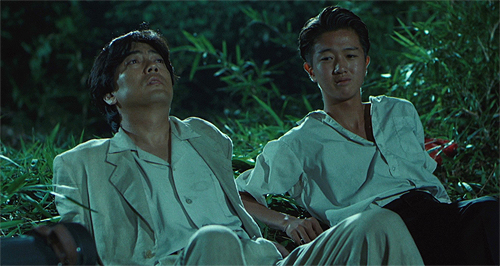
The director’s taste for hand-held camera work and swirling chase scenes occasionally shows up, though it’s been reigned in here. It’s perhaps more akin to the demonic force perspective in The Evil Dead, but it still adds a lot of energy when it’s used. There are also some interesting dream-like memory scenes and a lot of overwrought decapitations. These little touches should really have been used more often and in more varied ways. Similarly there are things like the stop motion effects and the body horror transformation Maseo has going on under his shirt. Animated monsters are great but there could be more of this technique elsewhere. Maseo’s growing pains are interesting and the effect of his skin burning is pretty sinister. It almost reaches a creative zenith towards the end; when all of Hiruko’s minions appear from a strangely ethereal crater and Maseo has to step up and face his destiny. But it’s all a bit too bland outside these major set pieces.
It doesn’t help that without a wealth of creatively exciting nightmare visions the plot is easier to scrutinize. An underground entrance is said to be behind the school bike sheds early on, but Hieda forgets this clue until it becomes relevant much later. The bug spray he carries around is a fun addition when things veer in John Carpenter territory but it’s one convenience too many. The main villain is mysteriously off-screen for long periods and many elements of the goblin plan are vague despite a large amount of exposition. Several characters seem aware of Hiruko’s evil after an incident many years earlier but nobody took greater care to stop it repeating itself. It’s hard to be too critical of a story that includes a severed head turning into a monster and playing the piano, but at the same time it’s tough to overlook all of these moments. If it was more disturbing more frequently it might be forgiven, but often it’s sappy or worse yet dull.
In the end it’s a mixed bag of ideas, but it’s still engaging. Just don’t have any expectations to see much beyond a laid back summer holiday adventure with occasional fountains of blood. The main duo are likeable and the music is often appropriate if unmemorable. Many of the effects hold up and it has a lot of charm overall. In a perfect world Yabe’s mother and the groundskeeper would be kept around to flesh things out, but the film works without this deeper exploration. Perhaps the original comic fills some of these blanks. The result isn’t one of the director’s classic works, but it’s also an earlier project before so many of his distinctive traits were set in stone. Only the dramatic title card feels like a piece of connecting DNA. But by all accounts Tsukamoto remains a fan of the film despite his artistic restrictions, rather than viewing it as a past mistake. Which is a positive outlook that reflects a film which, despite its flaws, can be enjoyed for what it is rather than what it could be. Creature feature fans should certainly check it out.
Rating: 









Further Reading:
Previously on Tsukamoto June:

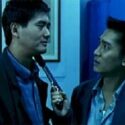

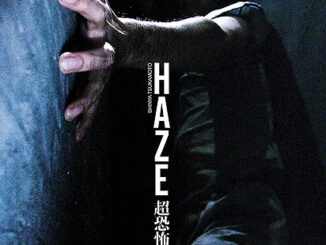
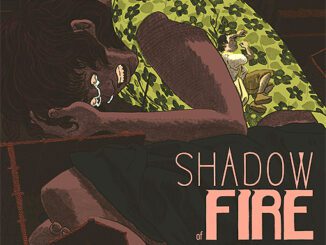
Be the first to comment